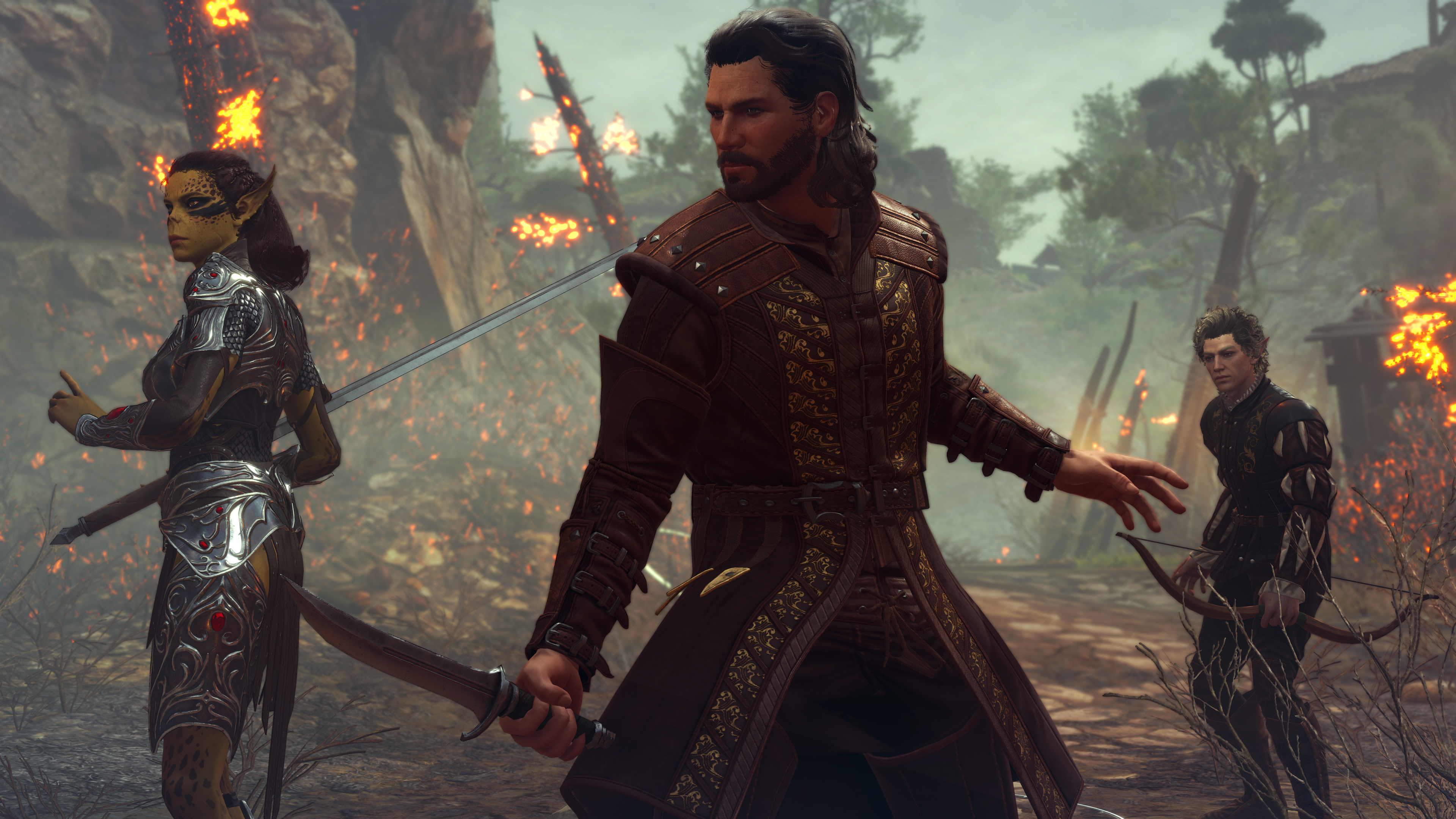
There’s even a handy radial menu mapped to the right trigger that allows you to access things like your spellbook, or the option to take a quick rest. The shoulder buttons allow you to scroll between members of your party quickly, while clicking both shoulder buttons at the same time automatically selects the entire party. Pulling way out is a good way to see how the game’s fog of war system impacts play. While you can flip between the two control schemes with the left and right buttons on the D-pad, zoom is mapped to the up and down buttons. The game’s tutorial, unfortunately, explains virtually none of this, and there are a number of other thoughtful additions I found just by messing around and exploring. Move to a stairwell, and you’ll have the option to move on to the next floor of the dungeon without the repetitive, annoying reminder to “gather your party.” It’s a much more elegant way to play the game, rivaling, and in some ways exceeding, the original experience on PCs. Move the party close to a locked chest, and you’ll get the icon for lock picking. So Beamdog has turned each point of interaction into a hotspot that automatically shows you a contextual icon. However, you lose the ability to point and click at objects on the map once you lock the control stick to movement. It’s a game changer, and makes general movement and combat much more manageable on the console. Now you can walk a single character around - or the entire party, in formation - like you’re playing a modern third-person RPG. But the second control scheme maps movement directly to the left thumbstick. By default, players move a big, clumsy cursor around the screen, which works OK. What Beamdog has done is build two completely different control schemes for these games. Those actions are much more tedious with a controller, however. That’s easy enough using mouse clicks just touch a spot on the ground and selected characters will move to that point. Like more modern titles such as Dragon Age, players’ need to control every single member of the party both in combat, and out.

Traditionally, it’s been played with a mouse and keyboard, but there was also a port for tablets that has been mostly written off for its abysmal touch interface.

Players design a single character, and then build out a party of up to six adventurers while tackling the foulest demons ever to assault Faerûn’s Sword Coast. Fans who want to check out more games in the same vein with an action-heavy focus should give the following games a try as well.Baldur’s Gate is a classic, party-based RPG built on the Advanced Dungeons & Dragons ruleset. The complexity of the game's systems, coupled with the enriching nature of its main cast and the overall narrative, made for a once-in-a-lifetime experience that fans of great role-playing titles should definitely check out. Updated March 13, 2022, by Ritwik Mitra: Baldur's Gate is one of the greatest role-playing games ever made. So, any gamer who wishes to relive the golden age of role-playing would definitely be interested in the following titles, all of which have replicated the formula of Baldur's Gate (or, at least, some aspects of it) to great success.
#Balders gate ios vs pc series
The popularity of Baldur's Gate gave rise to a number of CRPGs in its heyday, with a bunch of modern titles also - knowingly or otherwise - taking inspiration from this series to make their world feel more reactive and important for the player. The deep and intricate nature of the various elements that have been integrated into this classic is truly immense, and anyone who decides to take an in-depth into the nature of the systems present in Baldur's Gate will be rewarded with utter confusion and a reeling head. There was a time when Baldur's Gate was considered the gold standard of video game role-playing, and there are people who will stand by this statement even to this day.


 0 kommentar(er)
0 kommentar(er)
